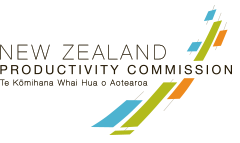Findings from this evaluation are framed as recommendations to apply more generally to future inquiries.
| Recommendation | Measure or type |
|---|---|
|
1. The Commission should include within final reports proactive discussions around trade-offs and decisions informing the scope and focus of final recommendations. In the case of this Inquiry, the discussion around the limitations of public sector management levers and mechanisms alone to reduce persistent disadvantage could have been simplified and emphasised for readers. |
Clear delivery of message |
|
2. The Commission should provide both a themed submission analysis on interim reports, as well as a clearer, more exhaustive rationale for how interim findings and recommendations translate into final findings and recommendations. The publishing of submissions provides a valuable record for those working on the topic in the future, and should continue. In the case of this Inquiry, decisions on frames and presentation for quantitative data evolved from the Interim Report were not communicated directly as part of submissions reporting. |
Clear delivery of message |
|
3. The Commission should actively consider the trade-offs inherent in its approach to engagement, consultation and feedback. This should include: a. the degree to which broad engagement approaches and activities are sustainable throughout the life of an inquiry; b. actively managing stakeholder expectations about sustainable levels of engagement, particularly when an inquiry is in more intensive analysis phases; and c. actively weighing up the relative merits of different consultation processes, and communicating this clearly as part of engagement. In the case of this Inquiry, the trade-offs inherent in consulting on the Terms of Reference, instead of publishing an issues paper, were not clear to some stakeholders. Stakeholders also had expectations that the broad engagement supporting the Terms of Reference consultation would continue at the same level throughout the Inquiry. |
Effective engagement |
|
4. The Commission should continue investing in engagement methods specific to Māori and Pasifika as part of future inquiry and work planning. In the case of this Inquiry, feedback on this capability was positive, with stakeholders identifying that more would help the Commission better integrate frames and experiences from these communities. |
Effective engagement |
|
5. The Commission could build in more mitigations to anticipate disruption and ensure planning and resourcing is fit for purpose. This could include: a. role clarity across leadership functions clearly articulated and stress-testing to ensure common understanding; b. revisiting scheduled processes for key milestones, such as confirming recommendations, in the event of any significant changes to resources or timeframes, to ensure that processes are still fit for purpose; and c. introducing acting arrangements as a mitigation to key- person risk. Lessons learned from business continuity during Covid events could inform this approach. In the case of this Inquiry, compounding factors across role clarity, key milestone planning for recommendation-setting, and intervening life events created significant resource pressure at the end of the Inquiry. |
Good process management |
|
6. Future use of the IDI should be planned with longer timeframes, to account for high demand and for unexpected delays. The Commission should consider carefully the length of time and scope required for IDI work, as part of the Terms of Reference stage, to ensure it can be delivered on time. In the case of this Inquiry, IDI access delays required the separate publication of quantitative findings from the rest of the Final Report. This caused confusion for readers and meant that some stakeholders did not engage thoroughly with the Quantitative Report. |
Good process management |
|
7. When delivering inquiries that are either system-level, or where there is a significant research gap, the Commission should continue to commission research that is both broad and deep. This is an important part of the purpose and function the Commission serves for Aotearoa New Zealand. In the case of this Inquiry, the Commission delivered an extensive research programme that reduced the knowledge gap in understanding persistent disadvantage. |
High quality work |
|
8. The Commission should invest more into capability around te ao Māori and Pasifika frames and experiences. This recommendation aligns with, but is separate to, Recommendation 4 concerning greater investment in engagement approaches with Māori and Pasifika. In the case of this Inquiry, the use of te ao Māori and Pasifika frames was done well. However, there were places where greater capability at the Commission could have improved understanding between frames of experience and made the process smoother for all. |
High quality work |
|
9. Future inquiries should actively consider which sectors and organisations may use and/or benefit from findings, and orient materials to fit that need. In the case of this Inquiry, the Final Report spoke clearly to community sector organisations. However, this sector could have benefitted from simplified messaging that speaks to its stakeholders more clearly. |
Purpose and function |
|
10. Consider the balance the Commission places across its purpose and functions. The Commission could explore benefits and methods of increasing its current function to promote public understanding, by introducing or strengthening influencing tools at its disposal. In the case of this Inquiry, a misunderstanding of the Commission’s mandate, combined with a general desire to see positive change in the topic area, created an ‘expectation of action’ which the Commission is unable to fulfil. |
Purpose and function |
|
11. Consider seeking a review of Commission purpose and function. This could include consideration of requirements on Government to respond to specific inquiries, and what implications any changes would have on the purpose and function and efficacy of the Commission. In the case of this Inquiry, some stakeholders questioned the efficacy of the current process, where, particularly in a system-level inquiry, there is no clear ‘home’ for ownership over Final Report recommendations. |
Purpose and function |
